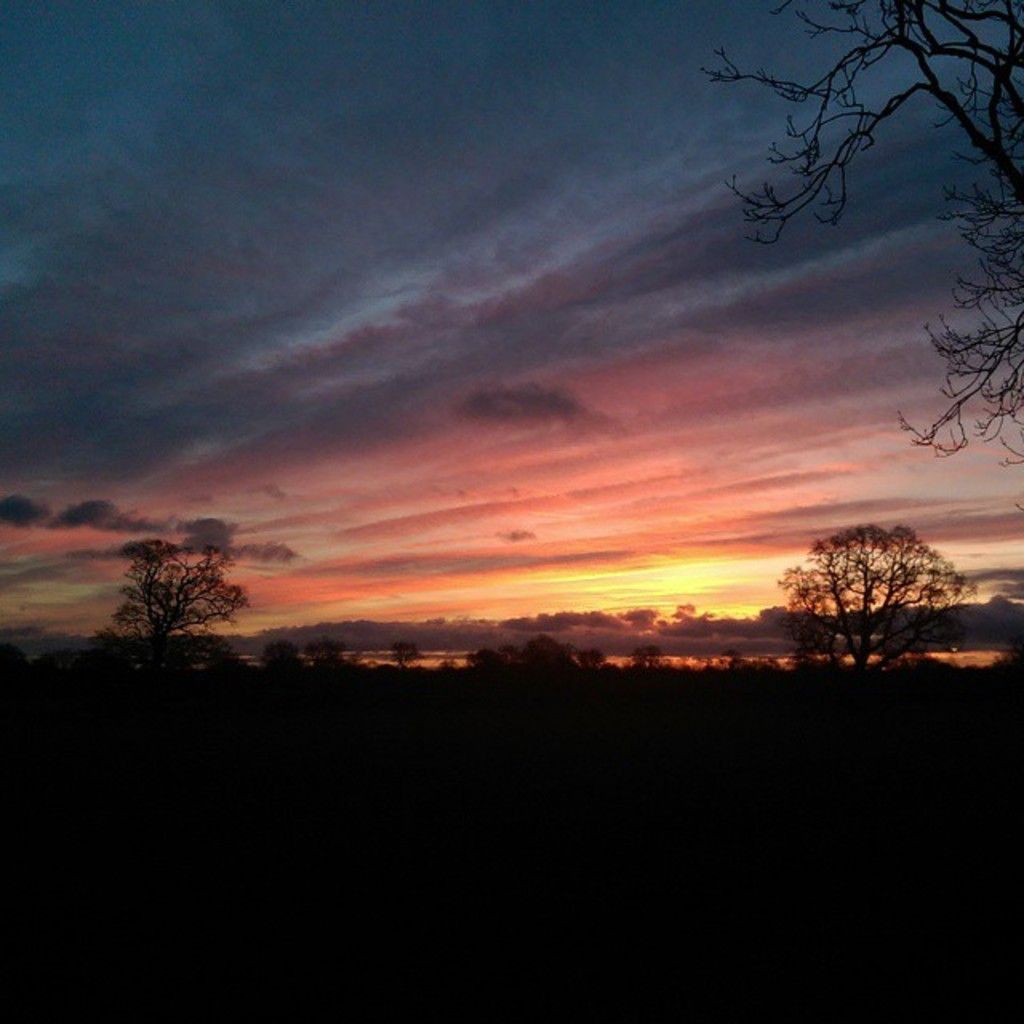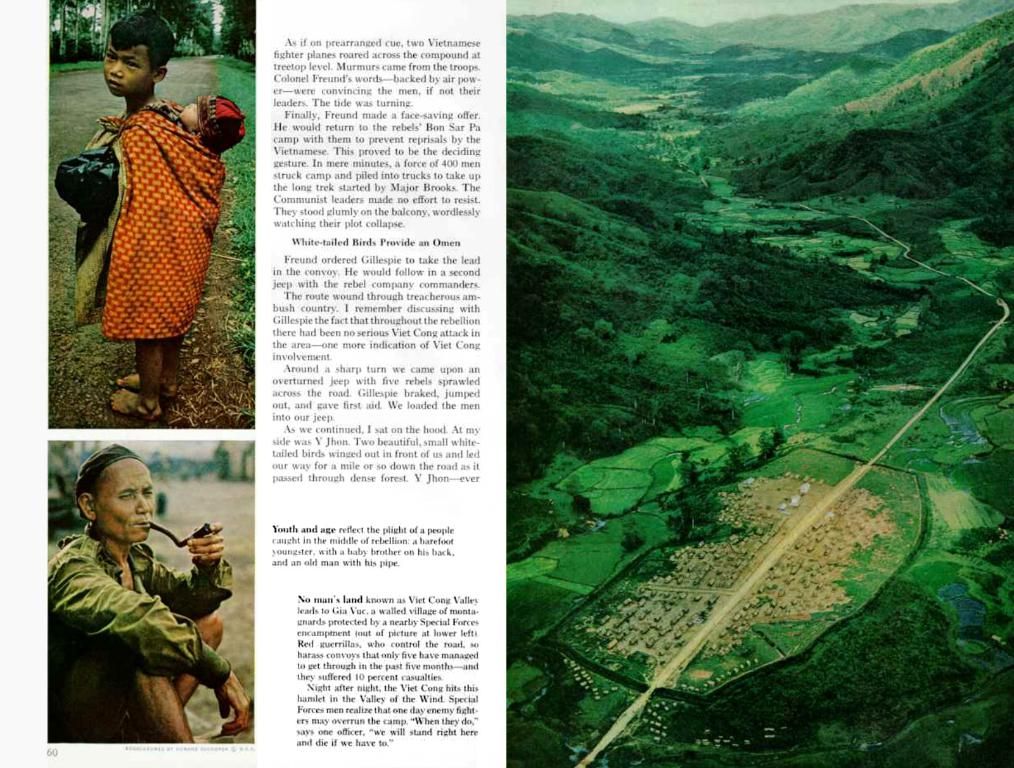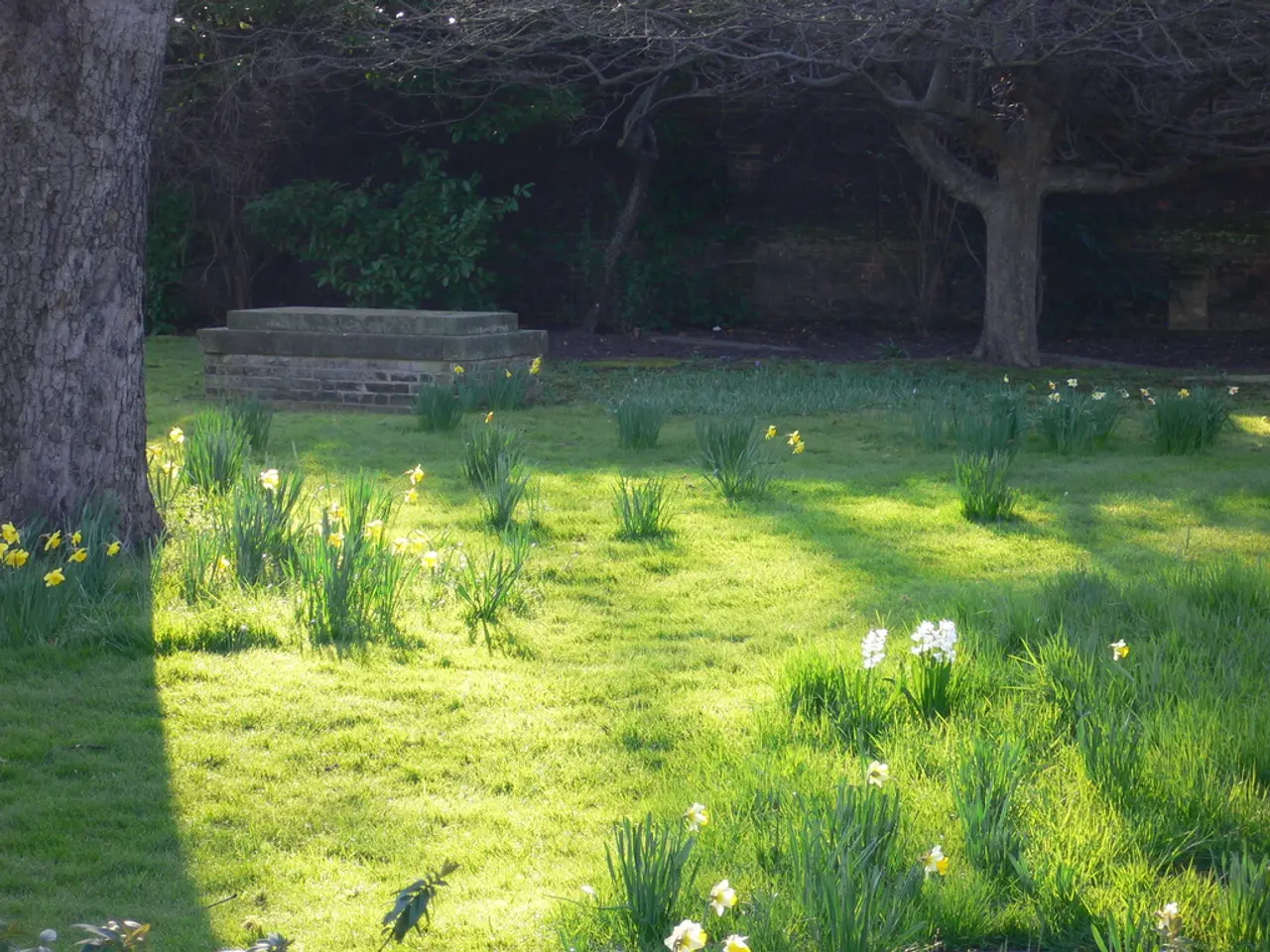Top-Notch Guidebooks for Outdoor Nature Exploration and Awe-Inspiring Discoveries
Delve into the wonders of nature with our pick of the best guidebooks to aid you in your outdoor explorations. Whether you're a seasoned naturalist or just starting your journey, finding the perfect field guide can turn ordinary observations into captivating discoveries about the world around you.
Why nature study guidebooks matter
Nature study guidebooks serve as indispensable tools for meaningful outdoor exploration and learning. Here's why they're essential for your nature study activities:
Identification Support
Transform your casual strolls into educational adventures by helping you identify plants, animals, and natural features. Guidebooks offer reliable reference points for comparing observed specimens, with detailed illustrations and photos that highlight key identifying characteristics.
Structured Learning Framework
Provide systematic approaches to observing and documenting nature. Offer age-appropriate activities that build observational skills and guide you through seasonal changes and lifecycle patterns.
Scientific Context
Connect local observations to broader ecological concepts, explain relationships between different species and habitats, and provide background information on natural phenomena.
Safety Information
Help identify potentially harmful plants and animals, outline proper outdoor safety protocols, and share guidelines for responsible nature observation.
Learning Enhancement
Introduce journaling prompts, observation exercises, nature drawing templates, related activities to deepen understanding, proper scientific terminology, and nature-specific vocabulary. Building these skills will assist you in communicating your observations and findings effectively.
This structured approach to guidebooks makes your nature walks more than just casual outings—it turns them into enriching learning experiences while fostering a deeper connection with the natural world.
Choosing the right plant identification guidebook
Selecting the right field guide is crucial for successful plant identification during nature study activities. Here's a look at the most trusted guide series available:
Peterson Field Guide Series
Peterson Field Guides offer two options for plant enthusiasts. Their comprehensive Field Guide series uses detailed illustrations with arrow markers pointing to key identification features, making plant recognition straightforward. The First Guide series provides a simplified approach perfect for beginners with basic dichotomous keys and clear black-and-white drawings alongside color illustrations for essential species.
National Audubon Society Guides
National Audubon Society Field Guides excel in bird identification, with high-quality full-color photographs. They feature glossy photographic plates, showcasing plants in their natural habitats, making visual identification easier. These guides include detailed descriptions, seasonal information, and geographic distribution maps to help you pinpoint specific plant species with confidence.
Sibley Guides to Plants
Sibley Guides combine scientific accuracy with artistic precision in plant identification. Their guides feature hand-drawn illustrations that highlight subtle differences between similar species. Each entry includes detailed notes about plant characteristics, growth patterns, and seasonal variations. The guides also provide helpful comparison pages showing related species side-by-side, aiding distinction between look-alike plants.
Exploring animal and wildlife guidebooks
Tracks and Signs Identification Books
The Peterson Field Guide to Animal Tracks leads the field in track identification resources. This comprehensive guide features detailed illustrations of footprints, patterns, behaviors, and droppings that help identify wildlife presence. Covering tracks from both common backyard animals, like rabbits and deer, to more elusive species, such as bears and mountain lions.
A Field Guide To Animal Tracks
Bird Watching Field Guides
National Audubon Society Field Guides are renowned for bird identification with their detailed color photographs and comprehensive species information. The guides are organized by visual similarity rather than scientific classification, making it easier for beginners to match their observations. Each entry features multiple photos showing birds in different poses, seasons, and plumages.
Selecting nature journaling and observation guides
Nature Drawing and Sketching Books
"How to Teach Nature Journaling" by John Muir Laws is an essential resource for developing nature drawing skills. This comprehensive guide combines art instruction with science education, offering practical field activities, curriculum plans, color theory, and sketching methods. Ideal for educators, parents, and nature enthusiasts dedicated to helping children develop their nature documentation skills.
Nature Journal Writing Guides
"The Ultimate Guide To Nature Journaling" offers detailed instruction for crafting compelling nature observations through writing. The guide emphasizes techniques for recording detailed field notes that combine scientific accuracy with engaging narrative style. It includes structured approaches for documenting weather patterns, animal behaviors, and seasonal changes while maintaining scientific rigor. You'll find practical exercises, prompts, and templates to help develop consistent journaling habits.
Nature Photography Reference Books
The Peterson Field Guides series includes valuable resources for nature photographers, focusing on composition, lighting, and subject matter in natural settings. These guides help you capture wildlife, plants, and landscapes effectively, combining technical photography skills with natural history knowledge. They provide tips for camera settings, seasonal shooting conditions, and ethical wildlife photography practices while emphasizing minimal environmental impact during photo sessions.
Best weather and climate study guidebooks
Cloud and Weather Pattern Guides
Peterson First Guide to Clouds and Weather offers clear visuals and diagrams that help identify common cloud formations and weather forecasting basics. The guide included step-by-step instructions for pattern recognition.
Audubon Field Guide to Weather features comprehensive photographs of atmospheric phenomena with detailed explanations of various weather conditions. It's arranged by weather type, making it easy to reference during outdoor observations.
Climate Study References
National Geographic Field Guide to Weather offers in-depth coverage of climate patterns and meteorological events, including colorful maps, regional climate data, and explanations of global weather systems.
Smithsonian Handbook of Weather combines scientific accuracy with practical observation techniques, featuring climate zone descriptions, global weather patterns, and informative charts for temperature precipitation patterns.
The Nature Connection: An Outdoor Workbook provides seasonal activities and weather observation projects for deepening your understanding of nature and the environment.
Four-Season Nature Study guides readers through year-round weather patterns and natural phenomena, with structured observation activities, weather tracking templates, and seasonal exploration ideas for different climate zones.
Discovering rock and mineral identification guides
When exploring rocks, minerals, and gemstones, having the right identification guides can turn casual observations into scientific discoveries.
Geology Field Guides
Peterson Field Guides lead the pack with comprehensive rock identification sections, featuring clear photographs, color-coded charts, and detailed mineral properties. The guide includes practical tests for hardness, luster, and crystal structure you can perform in the field.
National Geographic's Field Guide to Rocks and Minerals offers region-specific information with maps showing where to find specific specimens across North America.
Gemstone Identification Books
The National Audubon Society Field Guide to North American Rocks and Minerals stands out for its extensive gemstone section, with high-quality photographs and detailed formation descriptions. Each entry includes practical identification markers like color streak, cleavage, and specific gravity. The guide organizes gemstones by visual characteristics making field identification more intuitive and accessible for beginners and experienced collectors alike.
Mineral Collection References
Scholastic's Mineral Science Series offers an excellent foundation for building and organizing your mineral collection. The guides include step-by-step collection methods, proper specimen storage techniques, and classification systems based on chemical composition. Each reference includes detailed mineral property charts, specimen photography tips, and ethical collecting guidelines to help you develop a meaningful collection.
Essential nature activity and project books
Discover a curated selection of activity-focused guidebooks that transform nature exploration into engaging hands-on learning experiences.
Nature Craft Project Guides
"Wild Child: A Journey Through Nature" by Dara McAnulty is a remarkable guide that blends creative projects with natural discovery. The book features multi-sensory activities that connect children to nature through crafting using found materials like leaves, twigs & seeds. Each project includes clear instructions, safety guidelines, and variations for different age groups. The activities range from simple leaf printing to creating nature journals incorporating poetry & art.
Outdoor Learning Activity Books
"One Small Square: Backyard" by Donald Silver & Patricia Wynne offers focused exploration activities in compact outdoor spaces. The book teaches observation skills through structured activities that examine plant life, insect habitats, and seasonal changes. It's micro-habitat approach makes nature study accessible even in urban environments. The activities encourage detailed documentation, mapping, and scientific inquiry while maintaining an engaging hands-on format.
Nature Science Experiment Guides
"Urban Forest School" by Dan Westall & Naomi Walmsley provides practical science experiments that bring natural phenomena to life. The guide includes weatherproof activities testing soil composition, examining plant growth, and investigating local ecosystems. Each experiment features clear methodology, expected outcomes, and extension ideas. The book emphasizes safe outdoor experimentation while building core scientific skills through direct observation and hypothesis testing.
Finding age-appropriate nature study books
Selecting age-appropriate nature study books ensures optimal engagement and learning for different developmental stages.
Children's Nature Study Guides
The "Let's Read and Find Out" series offers science-based picture books with graduated reading levels perfect for young naturalists. This series is suitable for children ages 4 through 9.
"Take Along Guides" provide beautifully illustrated stepping stones between picture books and field guides. They cater to reluctant readers, offering simple identification keys, child-friendly illustrations, and basic tracking information suitable for ages 4 and up.
Common species guides, such as "Zoo in You: A Book of Wild Animals from Your Backyard" by Jane Yolen & Heidi E. Y. Stemple, are great options for young readers exploring local wildlife.
Teen Nature Study References
Teen-focused nature guides emphasize practical field skills and deeper scientific concepts. The Peterson Young Naturalists series combines detailed illustrations with age-appropriate terminology and hands-on activities suitable for adolescents. "Field Notes" journals cater to the adolescent audience, featuring observation prompts and scientific sketching techniques.
Adult Field Guide Collections
Professional-grade field guides provide adults with comprehensive scientific information and detailed identification keys. Advanced collections include specialized taxonomic guides, regional biodiversity manuals, and professional research references designed for experienced naturalists.
Some noteworthy adult guides include the Peterson Professional Guide Series, Kaufman Field Guide collection, and Coffea Press's field guides.
Building your nature study library
Start your nature study collection with these essential field guides:
- Peterson Field Guides
- Features clear illustrations, diagnostic keys, and comprehensive information on a wide range of subjects, such as plants, birds, mammals, and insects.
- Kaufman Field Guides
- Offers user-friendly format with photographic guides organized by visual appearance rather than taxonomy.
- National Audubon Society Field Guides
- Provides comprehensive coverage with high-quality photographs region-specific information, and range maps.
- The Golden Field Guide Series
- Compact, pocket-sized guides covering a wide variety of subjects perfect for quick reference.
- *The Lost Art of Reading Nature's Signs*
- Teaches advanced navigation and observation skills through natural indicators essential for experienced naturalists.
Supplementary Study Materials
Enhance your nature studies with these additional resources:
- Take Along Guides
- Designed as introductory field guides for young naturalists, featuring:
- Simple identification keys
- Child-friendly illustrations
- Basic tracking information
- Nature Journals
- Document observations, sketches, and seasonal changes
- Encourage reflection and artistic expression
- Regional Nature Guides
- Focus on local flora, fauna, and ecosystems
- Tailored to the region, providing relevant information for immediate field use
Digital Guide Resources
Explore digital alternatives like mobile field guide apps, online nature communities, and digital nature journals that provide instant access to additional information and community support.
Mobile Field Guide Apps
- iNaturalist for plant and animal identification
- PictureThis for plant identification using machine learning
- Audubon Birds for bird identification and migration alerts
Online Nature Communities
- iNaturalist: a global community of nature enthusiasts and citizen scientists
- Project Noah: a platform for sharing wildlife observations and learning about local biodiversity
Digital Nature Journals
- Evernote for managing and editing journal entries
- NatureToObserve: an app for creating, sharing, and publishing nature journals
- NatureMapr: a platform for recording and sharing nature observations with others
Citizen Science Platforms
- eBird: a platform for reporting bird observations and contributing to ornithological research
- iNaturalist: a platform for recording observations,identifying species, and connecting with other naturalists
- MothMapping: a citizen science project focused on documenting moths in the United States
Making the most of your nature study guidebooks
Equipped with the right nature study guidebooks, you'll unlock a world of outdoor exploration and learning. Choose guidebooks that match your interests and skill level while considering the ecosystems in your area. Don't forget that digital alternatives can complement your printed guides, offering instant access to additional information and community support. Begin building your nature study library today with trusted series like Peterson, Kaufman, and National Audubon Society, and remember to take advantage of both digital and physical resources for a well-rounded nature study experience.
[1] "Tree Identification Walk: How to Use the Best Tree Guides," educationaloutdoorprograms.com, [Online].
[2] "Bird Guidebooks & Field Guides - Lynx Edicions," lynxeds.com, [Online].
[3] "Bushcraft Guides and Resources," latitude38.ca, [Online].
[4] "Weed Identification & Guide: 20 Common Weeds," kidsgardening.org, [Online].
[5] "The Best Bird Watching Books and Field Guides," bestbirdwatchingbooks.com, [Online].
Incorporating home-and-garden knowledge into your lifestyle can amplify the learning experience during nature walks.
Transform your outdoor exploration into a harmonious blend of nature study and home-and-garden. Understanding plant species and their growth patterns can provide insight into appropriate landscaping choices for your garden, while identifying bird species can help protect valuable pollinators or pest-eating birds. Integrating nature study with home-and-garden skills encourages a more sustainable and holistic approach to living, fostering a deeper connection between your outdoor adventures and daily life.








